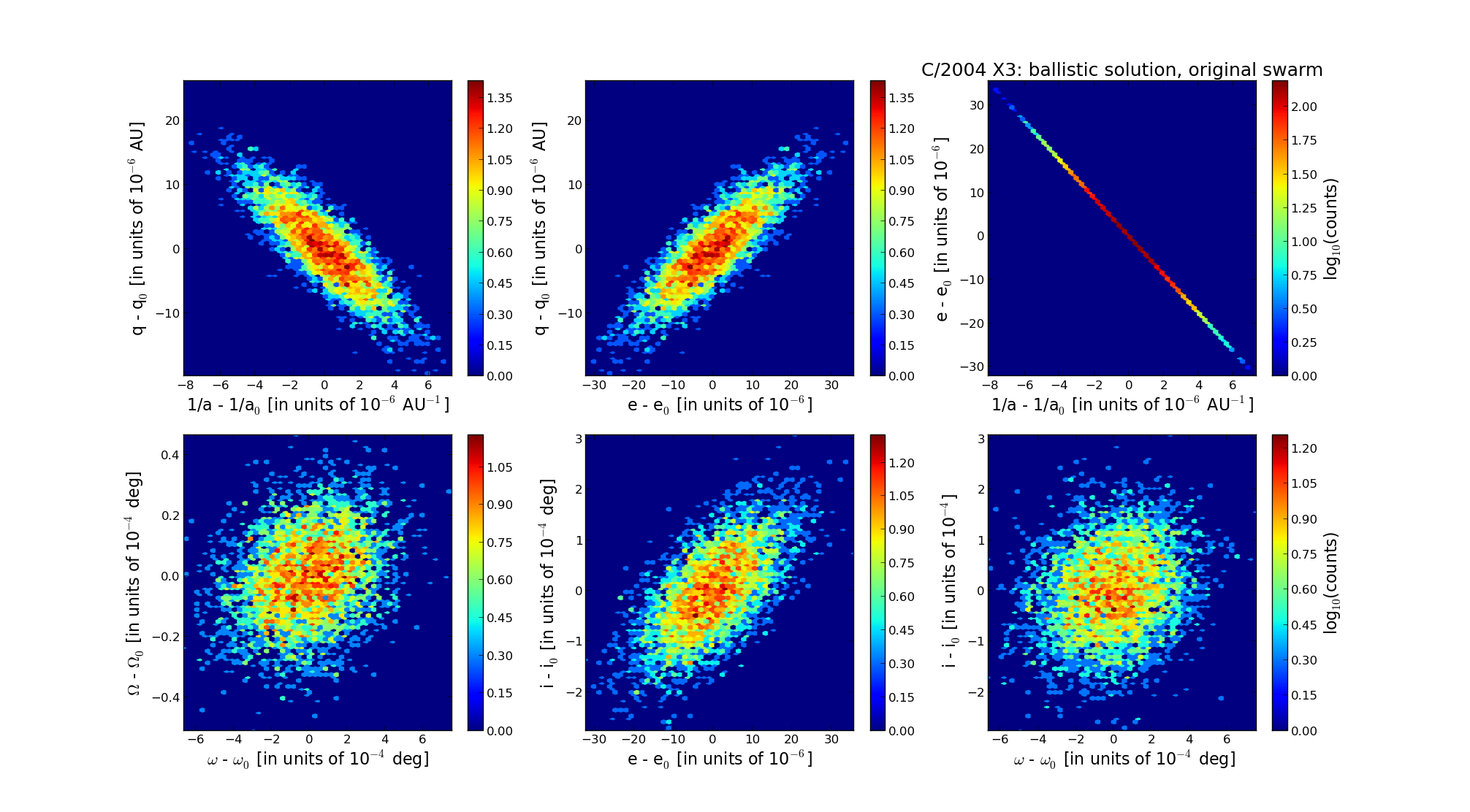C/2004 X3 LINEAR
more info
C/2004 X3 was discovered on 15 December 2004 by the LINEAR as an apparently asteroidal object. In the following week its cometary apperance was reported by observers [IAUC 8457, 2004 December 21]. At the moment of discovery, it was 6 months before its perihelion passage (see figure).
This comet made its closest approach to the Earth on 9 March 2005 (3.499 au), 3.3 months before perihelion.
Solution given here is based on data spanning over 1.3 yr in a range of heliocentric distances: 4.65 au – 4.402 au (perihelion) – 4.98 au.
This Oort spike comet suffers notable planetary perturbations during its passage through the planetary system that lead to escape of the comet from the solar system on hiperbolic orbit (see future barycentric orbit).
See also Królikowska 2014 and Królikowska and Dybczyński 2017.
This comet made its closest approach to the Earth on 9 March 2005 (3.499 au), 3.3 months before perihelion.
Solution given here is based on data spanning over 1.3 yr in a range of heliocentric distances: 4.65 au – 4.402 au (perihelion) – 4.98 au.
This Oort spike comet suffers notable planetary perturbations during its passage through the planetary system that lead to escape of the comet from the solar system on hiperbolic orbit (see future barycentric orbit).
See also Królikowska 2014 and Królikowska and Dybczyński 2017.
| solution description | ||
|---|---|---|
| number of observations | 250 | |
| data interval | 2004 12 15 – 2006 03 31 | |
| data type | significantly more measurements before perihelion (PRE+) | |
| data arc selection | entire data set (STD) | |
| range of heliocentric distances | 4.65 au – 4.40 au (perihelion) – 4.98 au | |
| detectability of NG effects in the comet's motion | NG effects not determinable | |
| type of model of motion | GR - gravitational orbit | |
| data weighting | YES | |
| number of residuals | 487 | |
| RMS [arcseconds] | 0.51 | |
| orbit quality class | 1a | |
| orbital elements (barycentric ecliptic J2000) | ||
|---|---|---|
| Epoch | 1701 04 14 | |
| perihelion date | 2005 06 18.21953800 | ± 0.00140300 |
| perihelion distance [au] | 4.38911289 | ± 0.00000571 |
| eccentricity | 0.99994104 | ± 0.00000930 |
| argument of perihelion [°] | 202.411327 | ± 0.000206 |
| ascending node [°] | 343.029540 | ± 0.000014 |
| inclination [°] | 81.169463 | ± 0.000081 |
| reciprocal semi-major axis [10-6 au-1] | 13.43 | ± 2.12 |
| file containing 5001 VCs swarm |
|---|
| 2004x3a2.bmi |

